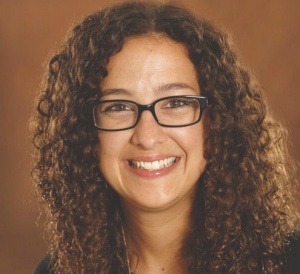The new schoolyard: Understanding and preventing cyberbullying
A conversation about cyberbullying symptoms and strategies with Stephanie Fredrick
BY DANIELLE LEGARE
Stephanie Fredrick’s cyberbullying research began while enrolled in her school psychology doctoral program in 2012. During that time, she noticed that several media outlets reported that cyberbullying caused adolescent suicide. Yet, she couldn’t find scholarly research to support those claims. Now, as the associate director of the Alberti Center for Bullying Abuse Prevention and an assistant professor in GSE’s Department of Counseling, School and Educational Psychology, Fredrick’s career is centered on studying cyberbullying and developing school-based prevention strategies.
In addition to her work as an assistant professor and associate director of the Alberti Center, Stephanie Fredrick is a licensed psychologist and nationally certified school psychologist. She has consulted with schools about bullying prevention and social-emotional learning.

























